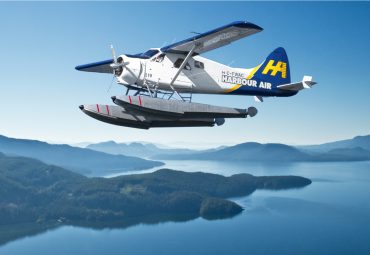News from the aviation world has not been encouraging of late. Increased overall emissions, worries about safety and peripheral noise – but some airlines are making sustainable, safe operation part of their marketing pitches. By James Teo
Cebu Pacific is aiming for the maximum fuel efficiency and minimal emissions with its new aircraft. Courtesy Cebu Pacific.
SINGAPORE, 13 March 2019 – Faced with a chorus of concern from travellers about emissions from aircraft, many airlines have decided to make environmental responsibility a key marketing issue. Although CO2 emissions for aircraft can be roughly equated to those for cars (on a volume per passenger/kilometre basis) they put their spent fuel emissions right where it hurts most – in the sky. And passenger numbers are rising: growth will double to 8 billion passengers by 2035. So any reduction in aircraft emissions is a big bonus. Some carriers are doing what they can.
“We are committed to investing in game-changing aircraft that can fly passengers farther and faster at lesser fuel burn,” says Philippines airline Cebu Pacific marketing chief Candice Lyog. Sounds good – but where is the beef? To help cut its overall emissions Cebu has placed an order for 32 new fuel-efficient Airbus A321neo aircraft, which claim up to a 35% reduction in fuel burn per passenger. That is a considerable cut in consumption and hence emissions, compared to its existing workhorse A320 aircraft.
The airline has also widened its commitment to sustainable aviation inside the cabin. It has replaced all non-recyclable plastic spoons, forks, stirrers and cups it previously used with sustainable alternatives for inflight meals – on some 400 flights daily. Pioneered by Portuguese airline HiFly, the use of biodegradeable cutlery is catching on fast.
Recyclable inflight packaging and cutlery is catching on fast. Courtesy Hi Fly.
“Shifting to eco-friendly utensils for our inflight catering has increased costs by 46%, but it results in 460,000 fewer pieces of single-use plastic being thrown out every month,” explains Lyog. “We feel that the investment is worth it.”
On the other side of the globe, the largest seaplane operator in the world, Harbour Air Seaplanes from Canada, flies 40 seaplanes on over 30,000 flights a year. So, surprisingly, it claims to be the first North American company to be given a carbon-neutral rating back in 2007.
“Being a sustainable and responsible corporate citizen is not only embedded into our organizational values, but, I believe, vital to our success in the community,” says Randy Wright, President, Harbour Air. “Understanding that fact inspired us to begin calculating and offsetting 100% of our carbon emissions – becoming North America’s first fully carbon neutral airline in 2007,”says the company.
It uses offsets, through a Canadian sustainability operator called Offsetters Climate Solutions to look at seaplane fuel usage as well as operating sustainably by optimising its aircraft use, actively managing flight loads, paperless ticketing and payroll, recycling programs and other initiatives.
Harbour Air was the first zero-carbon airline in North America. Courtesy Harbour Air.
One of the key projects it supports is The Great Bear Forest Carbon Project. This implements changes in land-use legislation and regulation that result in increased carbon stocks in the largest intact coastal temperate rainforest remaining in the world. Harbour Air offsets are used to help convert forests that were previously approved for commercial logging into protected forests. Knock-on emissions caused by harvesting, road building and other forestry operations are also prevented.
Another big carrier with links to the green outdoors, Finnair, also claims to be doing its best to keep our air clean. Using a mantra of reducing jet fuel emissions, cutting noise, reducing corporate energy consumption and cutting waste, it has seen a 20% drop in emissions between 2009 and the end of 2017. It also offers its passengers an easy way to calculate the emissions they create on any trip.
Finnair’s Kati Ihamäki says airlines should look to alternative energy usage. Courtesy Finnair.
“The aviation industry …keeps growing,” says Kati Ihamäki, Finnair’s Sustainability director. “We must find new ways of reducing jet fuel consumption and rely more on alternative sources of energy.” The airline also offers passengers to option to contribute by making a direct purchase of biofuel to be used in future flight operations or to help promote the use of low emission cooking stoves in Mozambique.
“Our research shows that the majority of (Finnish) public are willing to make contributions, if the funds would directly offset carbon emissions,” she adds.
So there are options that the concerned flying passenger can make to reducing CO2 pollution – but it means selecting the right airline. It’s not about not flying – although taking the train is way less damaging in most instances – but about flying as sensitively as you can, if you really have to fly.
“Tourism is good. It creates jobs and spurs economic development. But we need to ease the negative impact of tourism and balance the social and environmental concerns with its economic benefits,” says Cebu’s Lyog. Selecting the most responsible - not just the cheapest - air carrier means you can do your bit too.



